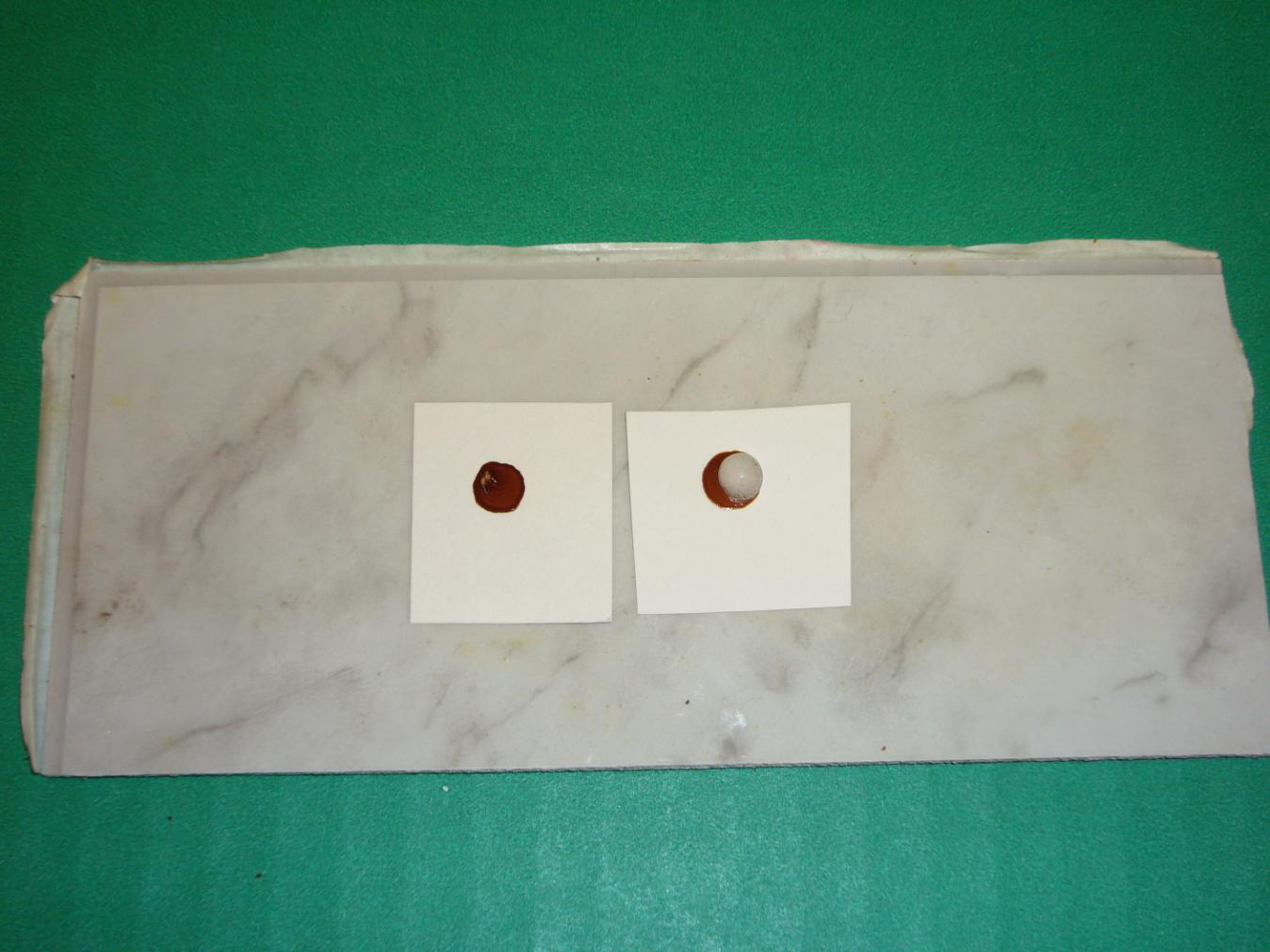Alternate Experiment: Confirming the Presence of Blood
This experiment can be used as an alternate activity for students who may not be at a level to understand the concepts presented in the Blood Typing Lab.
At a "crime scene", investigators often perform simple preliminary tests to determine if a suspicious stain is actually blood. The test described here confirms the presence of the blood component hemoglobin. Hemoglobin is composed of two parts, heme, the iron-containing part and globin, a protein. It is the heme that is involved in the test.
Heme acts as a catalyst to speed up the decomposition of hydrogen peroxide (H2O2) into water and oxygen gas.

In the presence of heme, the stain will bubble and sometimes froth on the addition of hydrogen peroxide. A positive test, however, does not confirm that the blood is human blood. Any "red-blooded" creature has heme in its blood. Heme is responsible for the red color.
Experiment
- Collect dried "suspected" blood from the crime scene, if desired, by scraping it with a suitable tool. Place it in an evidence container. Or, just test the "stain" where it is found.
- Place 2-3 drops of hydrogen peroxide onto the stain. Wait 2-3 minutes while observing the stain carefully for the presence of tiny bubbles of gas.
- Report results as a (+) positive or (-) negative test result. (+) - gas bubbles observed
(-) - no gas bubbles observed

Teacher’s Notes
Beef blood is easy to obtain. Just check out the bottom of the container of ground meat or liver you got at the grocery store. Beef bloodstains can be made on paper or ceramic tile (to simulate a floor). It is best to prepare these stains ahead of time as the beef blood "ages" rapidly, even under refrigeration. These stains will react almost immediately on addition of the hydrogen peroxide and produce white frothy bubbles.
To prepare a “blood” stain, simply use a dropper or pipette to place pea-sized drops of blood on the surface of your choice and then let dry.
To extend the activity, test other red or brown stains, such as motor oil, ketchup, food coloring, or coffee.
Reagents
Hydrogen Peroxide- 3% solution available in a drug or grocery store